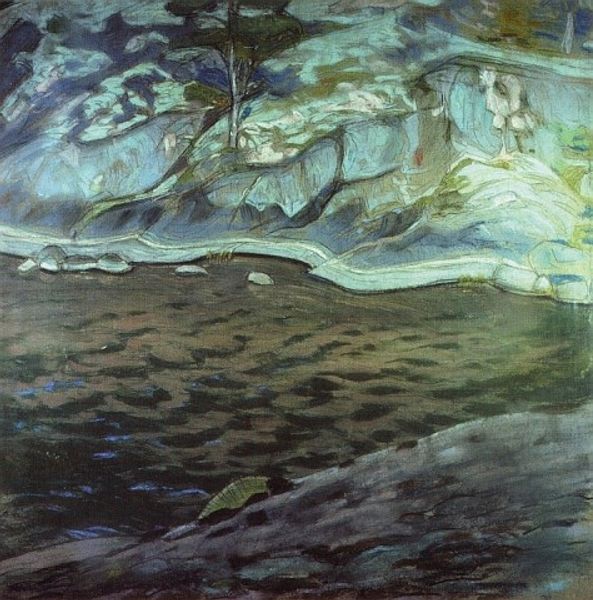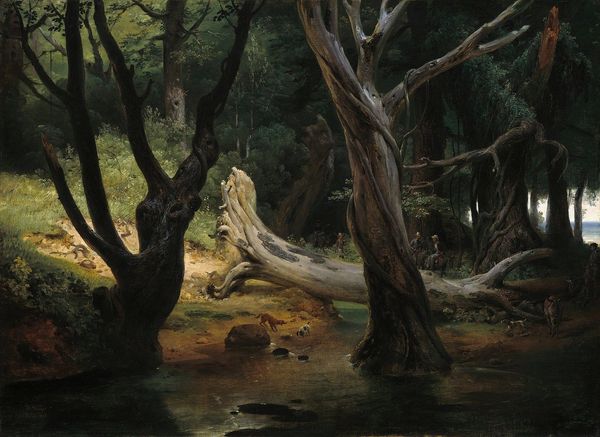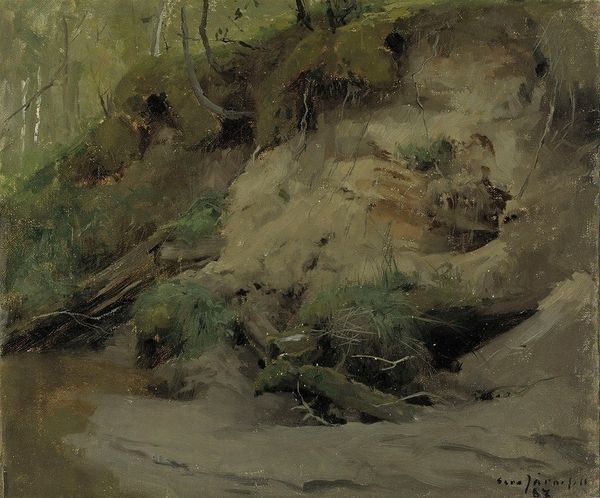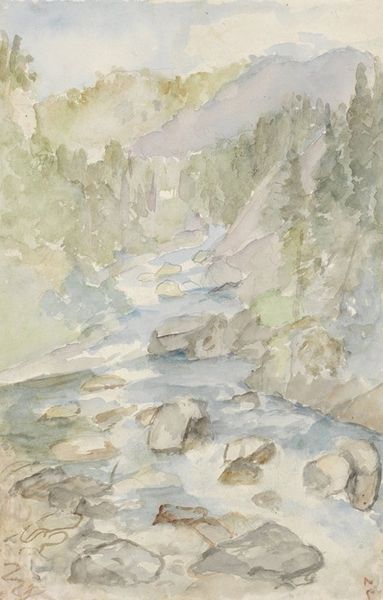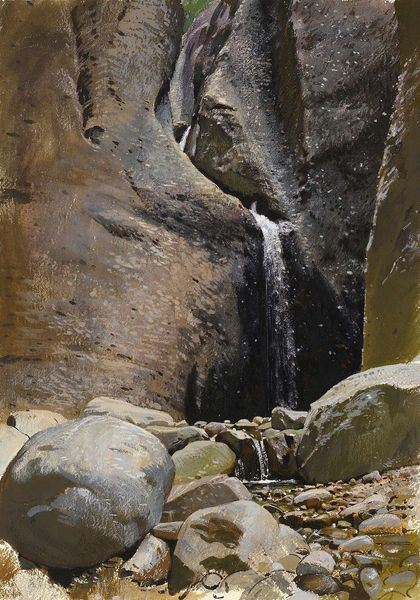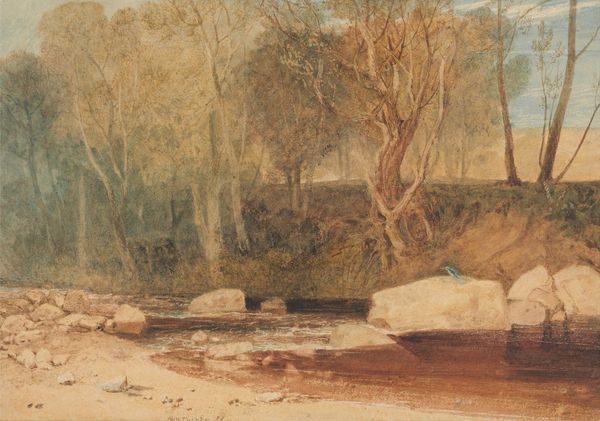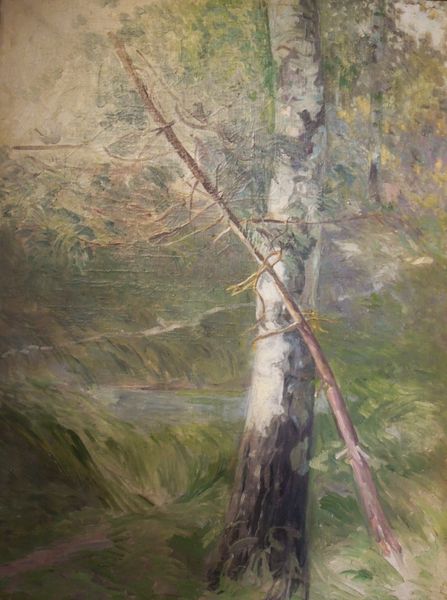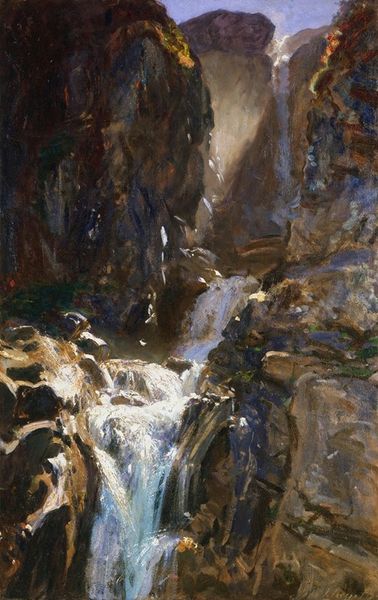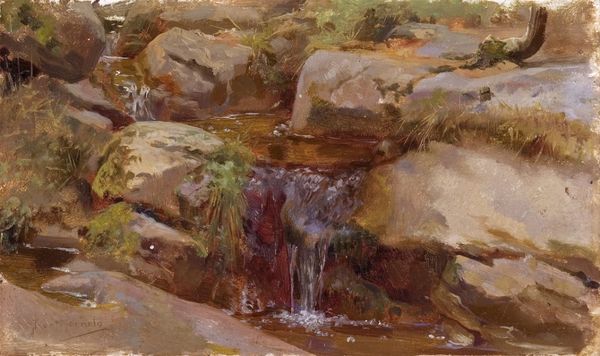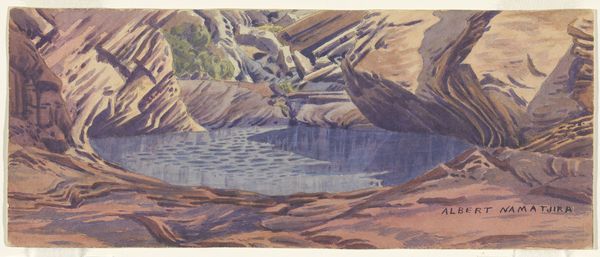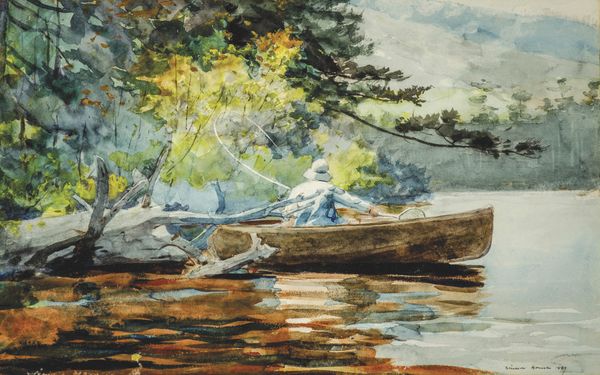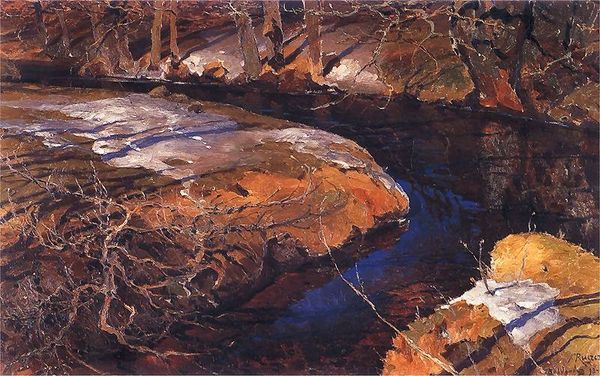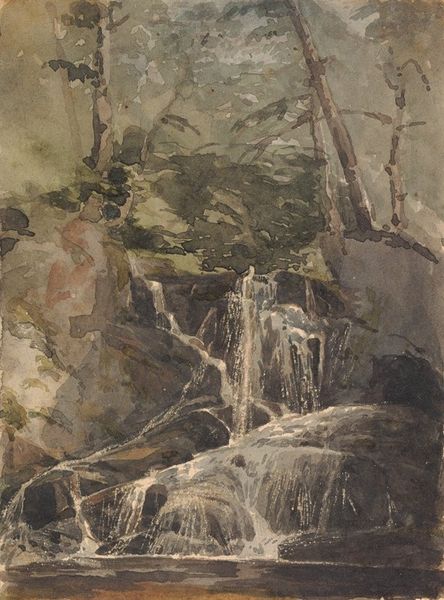
Copyright: Public Domain: Artvee
Curator: Here we have Pekka Halonen's "Spring Landscape" from 1929, a gorgeous example of his work. Editor: It strikes me immediately with its subdued palette—almost monochromatic. The browns and whites create a sense of lingering winter, despite the title. There is a beautiful tension between the stillness of the frozen water and the promise of spring. Curator: Absolutely. Halonen often imbued his landscapes with a sense of quiet contemplation. The landscape embodies this intersection between Romanticism and a burgeoning Finnish national identity. Editor: Let's look at the boat, pulled up onshore. Halonen juxtaposes organic and geometric forms to suggest the relationship between humanity and the landscape, but with great restraint. Note how it also divides the painting vertically to create asymmetry. Curator: Yes, a crucial part of the Finnish aesthetic. The boat resonates as a strong visual symbol, particularly since boats and water have significant metaphorical weight relating to freedom, exploration, or perhaps spiritual voyages. One should think of how waterways acted as communication paths long ago, bearing both utilitarian and mythological importance. Editor: Interesting idea! Semiotically, we could also see the boat as an index of human presence. Although subtle, I think it alters the entire perception of nature within the canvas; instead of being remote and imposing, it is instead gentle and available for domestication. Curator: And given that Halonen spent most of his life in the Tuusula artist community north of Helsinki, you get a glimpse into what daily life and identity construction in that time was like. Spring signifies rebirth, hope—particularly relevant during a time of nationalistic fervor in Finland. Editor: It truly encapsulates that tension of early spring—the beauty and melancholic anticipation of nature. It makes you want to experience what this exact scene might be like in person. Curator: A visual echo, then, through cultural memory and anticipation. Well, that’s Halonen for you. Editor: Exactly! The way a simple set of natural forms conveys such quiet and complex sentiment...magnificent.
Comments
No comments
Be the first to comment and join the conversation on the ultimate creative platform.
